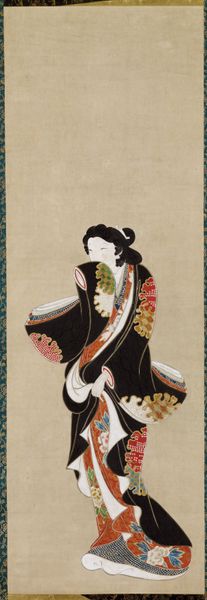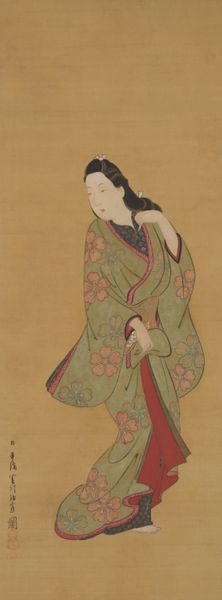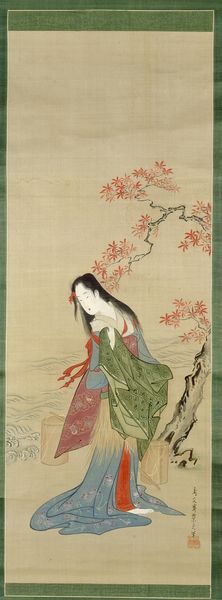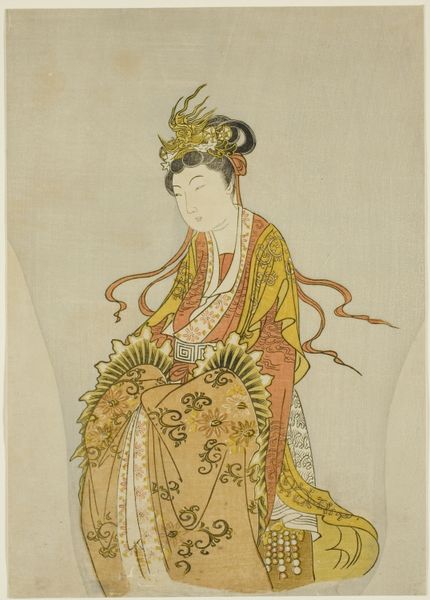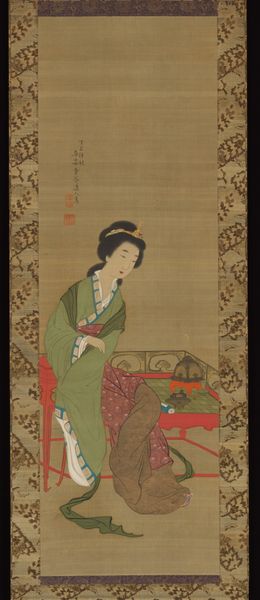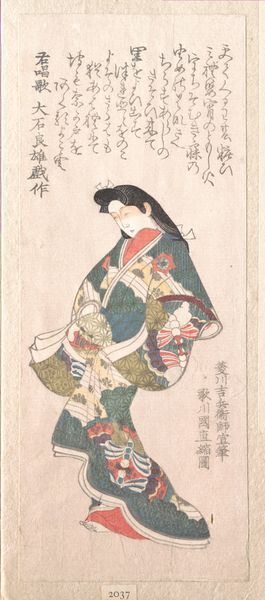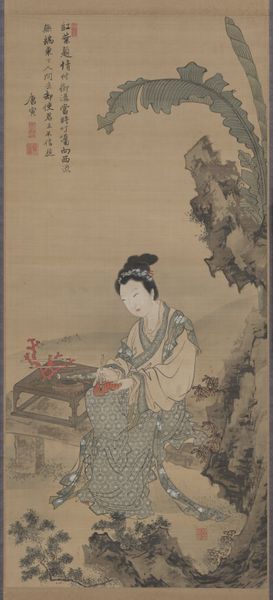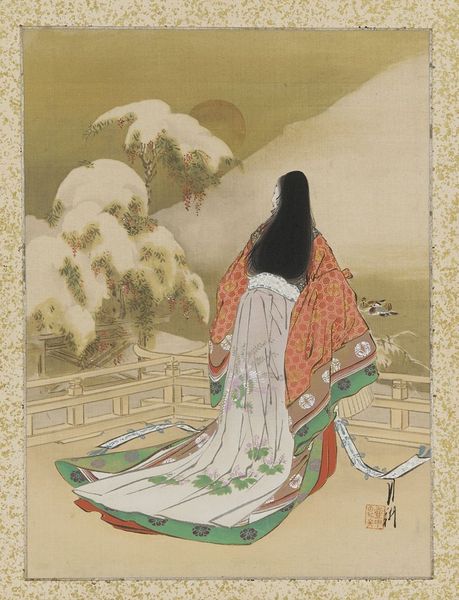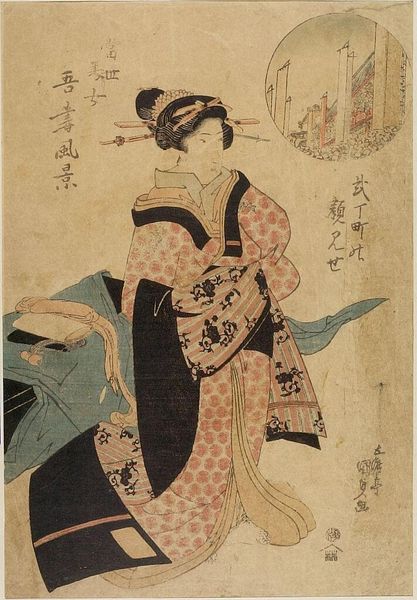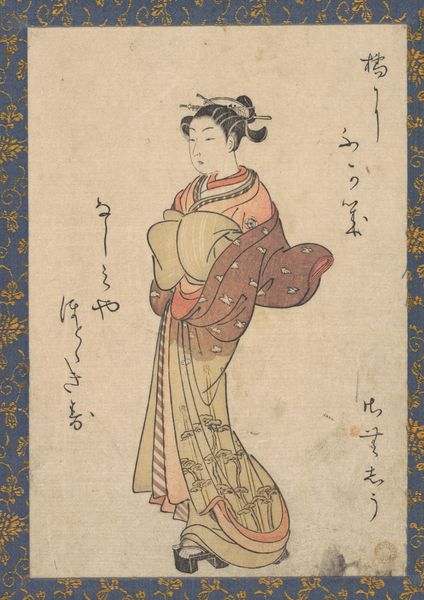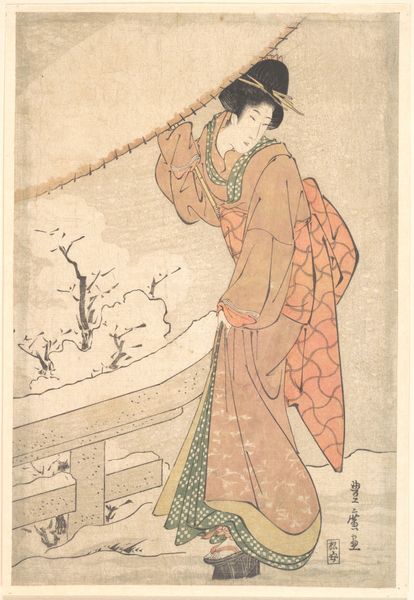
watercolor, ink
#
portrait
#
water colours
#
asian-art
#
ukiyo-e
#
japan
#
figuration
#
watercolor
#
ink
#
coloured pencil
#
japanese
#
watercolor
Dimensions: 34 5/16 × 13 1/4 in. (87.15 × 33.66 cm) (image)70 1/4 × 17 5/8 in. (178.44 × 44.77 cm) (mount, without roller)
Copyright: Public Domain
Curator: This scroll before us is titled “Standing Beauty,” a work attributed to Hishikawa Moronobu, dating from around the 18th century. It's currently housed right here at the Minneapolis Institute of Art. Editor: What strikes me first is the quiet melancholy. She seems lost in thought, doesn’t she? A reverie of fabric and form. The ink and watercolour create this incredibly muted, almost dreamlike quality. Curator: It's a wonderful example of ukiyo-e, capturing the floating world, ephemeral beauty, and the transient nature of life. It's fascinating to consider how ink and watercolour, materials so grounded in process and craft, can create such an ethereal representation. The materiality, specifically the washi paper it's painted on, really dictated the controlled yet flowing nature of the brushstrokes, no? Editor: Absolutely. And think about the skilled labor involved – grinding the inks, preparing the paper. This isn't just an image; it's a testament to meticulous handcraft. Yet, you feel the freedom, a subtle defiance against rigidity in her posture, perhaps a yearning escaping the confines of the visible world. I wonder what stories this "beauty" carries. Was she a courtesan, a noblewoman, a figment of the artist's imagination? Curator: That’s part of the enduring appeal, isn't it? Her ambiguity. And that brings us back to production, where the societal structure shaped the themes and motifs. Ukiyo-e often depicted the pleasure districts, reflecting the consumer culture of Edo-period Japan. But this is not overtly so, don’t you agree? Editor: Not overtly, no. I see her instead as an ancestor of modern muses, silent, perhaps burdened by unspoken tales, trapped between layers of delicate ink washes and her multiple kimonos. I find it remarkable how simple materials, combined with exquisite skill, can suggest so much hidden narrative. Curator: Indeed, a dance between surface and depth, much like the social layers of the time. Reflecting on “Standing Beauty,” it is apparent to me that every single mark and tone contains within it a wealth of context both physical and imaginative, no? Editor: And for me, that simple thought encapsulates why, even centuries later, this piece manages to stop us in our tracks and provoke reflection.
Comments
No comments
Be the first to comment and join the conversation on the ultimate creative platform.
